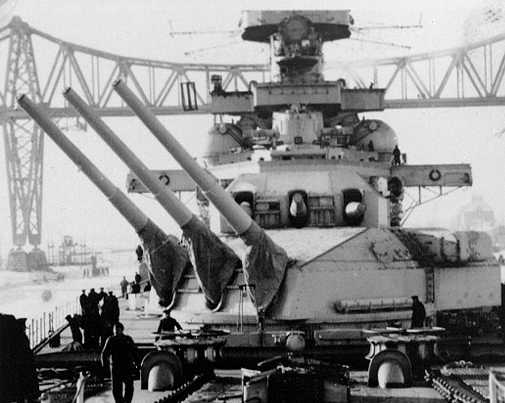This weapon was used for the small battleships Scharnhorst and Gneisenau and was an improved version of the 28 cm SK C/28 gun used for the Deutschland class Panzerschiffes. The high muzzle velocity of this weapon gave its relatively light-weight projectiles long range and good penetration power against belt armor, at the cost of relatively poor performance against deck armor.
Scharnhorst made one of the longest hits ever scored by a naval gun on an enemy ship when she struck the British carrier HMS Glorious at approximately 26,465 yards (24,200 m). See the History and Technology essay Longest Gunfire Hit for further details on this action.
It had been originally planned to regun the Scharnhorst class with 38 cm guns and then use the surplus 28 cm turrets to arm the first three of a new generation of Panzerschiffes, the "Kreuzer P" class. Additional guns and mountings were to be built to arm additional units of this class. However, all of these plans were abandoned at the start of the war.
After Gneisenau was badly damaged during a bombing raid in 1942, her guns were then used for coastal artillery emplacements. Turret Caesar still remains as a museum exhibit at Austrått Fort (Batterie Ørlandet) which is near Trondheim in Norway. Turret Bruno was used at Fledt, near Bergen. Turret Anton was too badly damaged to repair, so her individual guns were used to arm batteries in Denmark and the Netherlands.
Constructed of A tube, loose liner, two-part shrunk-on jacket, a breech end piece was screwed on hot to the jacket, and a breech block supporting piece which was screwed into the breech end-piece. The breech block was a horizontal sliding type.
The Netherlands Navy planned to use a very similar German built 28 cm gun for their never-built "Design 1047" Battlecruisers.
All German 28 cm guns had an actual bore diameter of 28.3 cm (11.1").
| Designation | 28 cm/54.5 (11") SK C/34 |
|---|---|
| Ship Class Used On | Scharnhorst and Kreuzer "P" classes |
| Date Of Design | 1934 |
| Date In Service | 1938 |
| Gun Weight | including breech 111,739.6 lbs (53,250 kg) |
| Gun Length oa | 607 in (154.415 m) |
| Bore Length | 571.1 in (14.505 m) |
| Rifling Length | 461.6 in (11.725 m) |
| Number Of Grooves | (80) 0.128 in deep x 0.265 in (3.25 mm x 6.72 mm) |
| Lands | 0.173 in (4.4 mm) |
| Twist | Increasing RH 1 in 50 to 1 in 35 |
| Chamber Volume | 10,984 in3 (180 dm3) |
| Rate Of Fire | 3.5 rounds per minute |
| Type | Cartridge - Bag |
|---|---|
| Projectile Types and Weights 1 2 | APC L/4,4: 727.5 lbs. (330 kg)
HE L/4,4 base fuze: 694.4 lbs. (315 kg) HE L/4,4 nose fuze 3: 694.4 lbs. (315 kg) HE L/4,4 nose fuze AA 4: about 685.0 lbs. (311 kg) |
| Bursting Charge 5 | APC L/4,4: 15.89 lbs. (7.208 kg) TNT 6 HE L/4,4 base fuze: 36.86 lbs. (16.718 kg) TNT 7 HE L/4,4 nose fuze: 47.37 lbs. (21.488 kg) TNT 8 |
| Projectile Length | APC L/4,4: 49.0 in (124.5 cm)
HE L/4,4 base fuze: 49.0 in (124.5 cm) HE L/4,4 nose fuze: 50.1 in (127.3 cm) |
| Propellant Charge 9 10 | Fore Charge: 75.0 lbs. (41.56 kg) RP C/32 (1949 x 16/7) + (1040 x 68/60 Pulvermittelrohr)
Rear Charge: 158.7 lbs. (76.69 kg) RP C/32 (1230/1190 x 16/7) + (1195 x 59/50 Pulvermittelrohr) - or - Fore: 93.7 lbs. (42.5 kg) RP C/38 (1050/1040 x 15/4,9) + (1040 x 68/60 Pulvermittelrohr)
|
| Cartridge Case Type, Size and Weight 11 | Brass, 283 x 1271 mm, about 99.2 lbs. (45.0 kg) 12 |
| Muzzle Velocity | APC: 2,920 fps (890 mps)
Others: N/A |
| Working Pressure | 20.3 tons/in2 (3,200 kg/cm2) |
| Approximate Barrel Life | 300 rounds |
| Ammunition stowage per gun | 150 rounds 13 |
- ^
Actual German designations APC L/4,4 28 cm Pzgr. L/4,4 (m.Hb) HE L/4,4 base fuze 28 cm Spgr. L/4,4 Bdz (m.Hb) HE L/4,4 nose fuze 28 cm Spgr. L/4,4 Kz (m.Hb) HE L/4,4 nose fuze AA 28 cm Spgr. L/4,4 Kz (m.Hb) – Haube abgeschraubt - ^Comments by Nathan Okun:
"This 28 cm gun had the same kind of projectiles, more-or-less, as did the guns on Bismarck and Hipper; the Psgr.m.K. L/4,4 AP rounds, scaled to the 28.3 cm size from the 38 cm and 20.3 cm size, respectively. The 28 cm SAP round [28 cm Spgr. L/4,4 Bdz (m.Hb)] was similar to the 38 cm round, but the 28 cm size did not have the light AP cap used with the 38 cm projectile. This was perhaps because the Germans knew that the French were using KC armor for their new battleship and battlecruiser turret roofs, so the Germans designed their 38 cm SAP projectile to defeat this armor at long range, reserving the 38 cm AP projectile for closer ranges where penetration of the main side armor was possible. A 28 cm SAP design of this kind would be too small to penetrate this kind of armor." - ^German HE Nose Fuzed projectiles with ballistic caps had a rod between the nose of the shell and the fuze to improve performance when striking obliquely. See details on 12.7 cm SK C/34 datapage.
- ^As of the 1939 publication date of M.Dv. Nr. 170,47, no AA version of the HE L/4,4 nose fuze was in service for these weapons. However, the post-war USN NAVTECMISEU Technical Report #191-45 "Standard German Projectile Fuzes" lists the time fuze Z.Z. S/60 nA as being used on the 28 cm Spgr. L/4,4 Kz (m.Hb) which implicitly means that sometime during the war an AA version of this projectile was issued. The AA projectile was the same as the standard HE Nose Fuze projectile, but had a time fuze in place of the instantaneous impact fuze and did not use the ballistic cap (windshield). This AA projectile was similar to that for the 15 cm/60 (5.9") SK C/25, see Anti-Aircraft Projectiles on that datapage for a sketch.
- ^Burster weights (reiner Sprengstoff) from M.Dv. Nr. 170,47.
- ^The burster for the APC projectile was made from Fp 15 and Fp 1.
- ^The burster for the HE base fuze projectile was made from Fp 20, Fp 15, Fp 10, Fp 5 and Fp 1.
- ^The burster for the HE nose fuze projectile was made entirely with Fp 1.
- ^These guns, like most large caliber German guns, used a "fore charge" which was propellant in a silk bag, and a "rear charge" which was propellant in a brass case. The brass case helped to seal the breech of the gun.
- ^Fore and rear charges were rammed together.
- ^During World War I the same cartridge case was used for the 28 cm SK L/40, 28 cm SK L/45 and 28 cm SK L/50 guns. During World War II it appears that the same cartridge case was still used for these older guns as well as for for the newer 28 cm SKC/28 and 28 cm SKC/34 guns.
- ^The cartridge rim diameter was 320 mm.
- ^This is the design figure. "German Warships 1815-1945" says that the actual outfit ranged from 105 to 150 rounds.
- APC and HE ballistic caps had a radius of 10 calibers.
| Elevation | With APC L4,4 | Striking Velocity | Angle of Fall |
|---|---|---|---|
| 2.0 degrees | 5,470 yards (5,000 m) | 2,513 fps (766 mps) | 2.5 |
| 4.3 degrees | 10,940 yards (10,000 m) | 2,139 fps (652 mps) | 5.7 |
| 7.4 degrees | 16,400 yards (15,000 m) | 1,824 fps (556 mps) | 10.3 |
| 11.3 degrees | 21,870 yards (20,000 m) | 1,578 fps (481 mps) | 17.2 |
| 16.2 degrees | 27,340 yards (25,000 m) | 1,430 fps (436 mps) | 25.7 |
| 22.0 degrees | 32,810 yards (30,000 m) | 1,371 fps (418 mps) | 35.3 |
| 29.2 degrees | 38,280 yards (35,000 m) | 1,404 fps (428 mps) | 44.0 |
| 38.2 degrees | 43,740 yards (40,000 m) | 1,509 fps (460 mps) | 52.0 |
| 40.0 degrees | 44,760 yards (40,930m) | --- | --- |
| Range | Side Armor | Deck Armor |
|---|---|---|
| 0 yards (0 m) | 23.79" (604 mm) | --- |
| 8,640 yards (7,900 m) | 18.09" (460 mm) | 0.76" (19 mm) |
| 16,514 yards (15,100 m) | 13.18" (335 mm) | 1.63" (41 mm) |
| 20,013 yards (18,288 m) | 11.47" (291 mm) | 1.87" (48 mm) |
| 30,000 yards (27,432 m) | 8.08" (205 mm) | 2.99" (76 mm) |
The above information is from "Battleships: Axis and Neutral Battleships in World War Two" for a muzzle velocity of 2,920 fps (890 mps) and is based upon the USN Empirical Formula for Armor Penetration.
| Range | Side Armor | Deck Armor |
|---|---|---|
| 10,936 yards (10,000 m) | 13.70" (348 mm) | --- |
| 16,404 yards (15,000 m) | 11.02" (280 mm) | --- |
| 21,872 yards (20,000 m) | 8.86" (225 mm) | --- |
| 27,340 yards (25,000 m) | 7.64" (194 mm) | --- |
The above information is from "German Capital Ships of World War Two." The data is based upon the pre-war Krupp test shoots on their range at Meppen with L/4,4 APC projectiles using RPC/32 propellant against KC-type armor at an impact angle of 70 degrees.
| Designation 1a | Three-gun Turrets
Scharnhorst (3) and Kreuzer P [first three units] (2): Drh LC/34 Kreuzer P [follow on units] (2): N/A |
|---|---|
| Weight | 1,653,467 lbs (750,000 kg) |
| Elevation | A and C turrets: -8 / +40 degrees
B turret: -9 / +40 degrees |
| Elevation Rate | 8 degrees per second |
| Train | about +150 / -150 degrees |
| Train Rate | 7.2 degrees per second |
| Gun recoil | N/A |
| Loading Angle | +2 degrees |
- ^The first three units of the Kreuzer P class were to re-use mountings from the Scharnhorst class after those ships had been rearmed with 38 cm SK C/34 guns. Other proposals saw new three-gun mountings being built that reverted to the same level of armor protection as those in the Panzerschiffes. In May 1939 plans were made to complete twelve of these ships between 1943 and 1948 but none of them were actually laid down.
- In general, these mounting had similar ammunition handling to that used for the Panzerschiffes with some differences to accommodate the larger projectiles.
- The center gun fired first followed by the wing guns 10 to 20 milliseconds later in order to reduce shell interference.
- Armor thickness for the Scharnhorst class as given in "German Capital Ships of World War Two" by M.J. Whitley:
Lower Face: 14.2 in (36 cm)
Upper Face: 5.9 in (15 cm)
Lower Sides: 7.9 in (20 cm)
Forward Upper Sides: 4.7 in (12 cm)
Rear Upper Sides: 4.3 in (11 cm)
Lower Rear: 6.7 in (17 cm)
Upper Rear: 3.1 in (8 cm)
Roof: 3.9 in (10 cm)
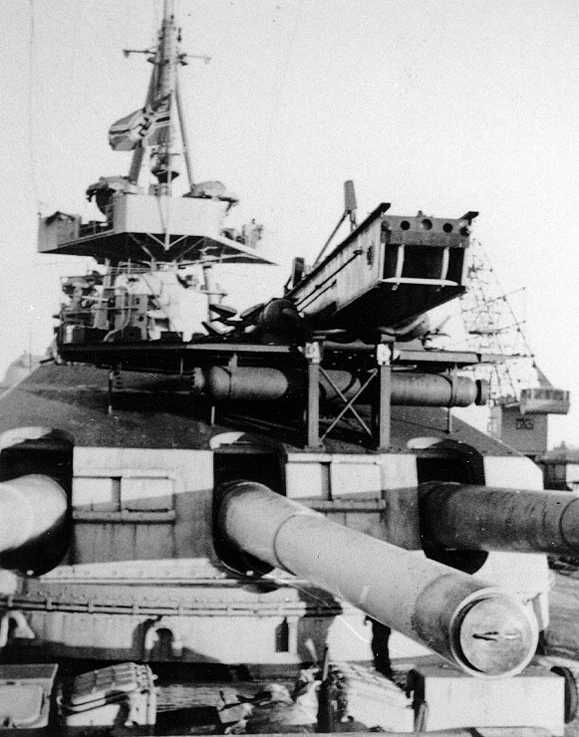
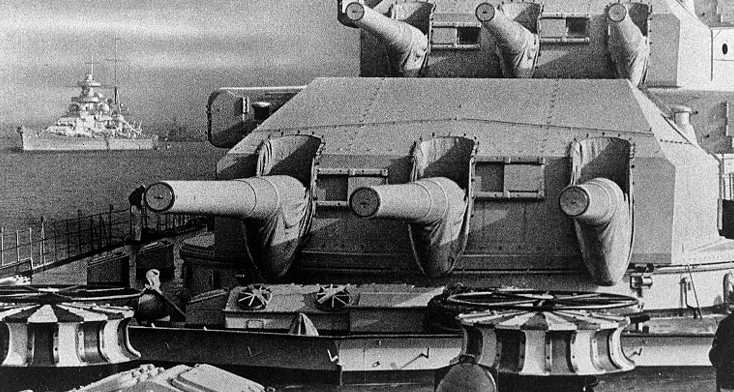
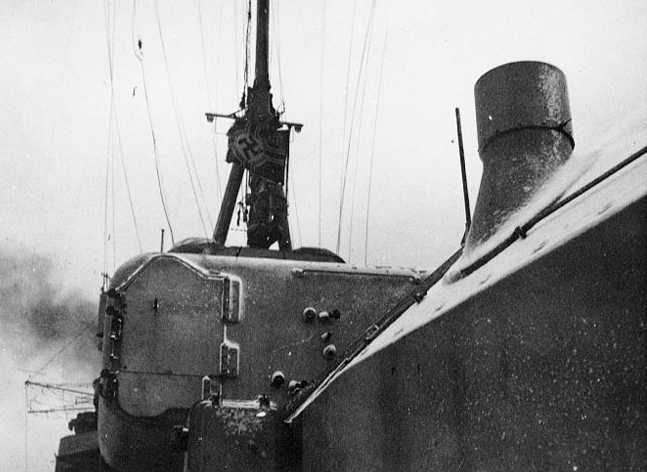
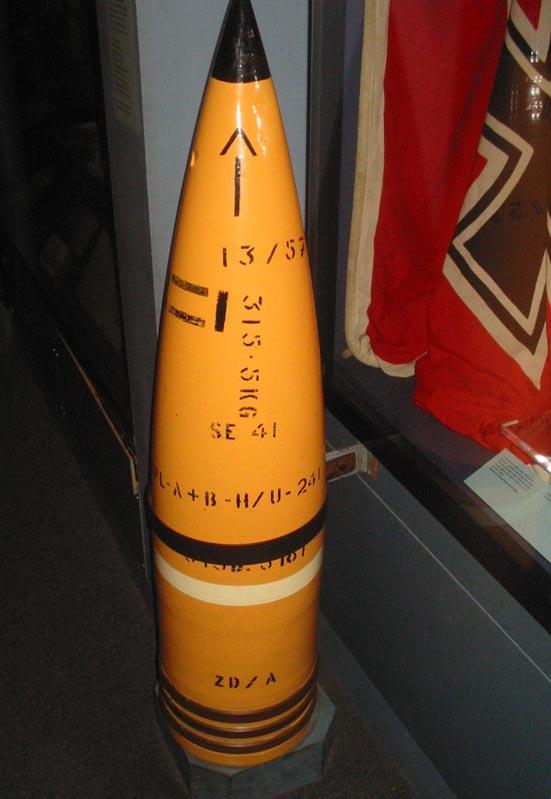
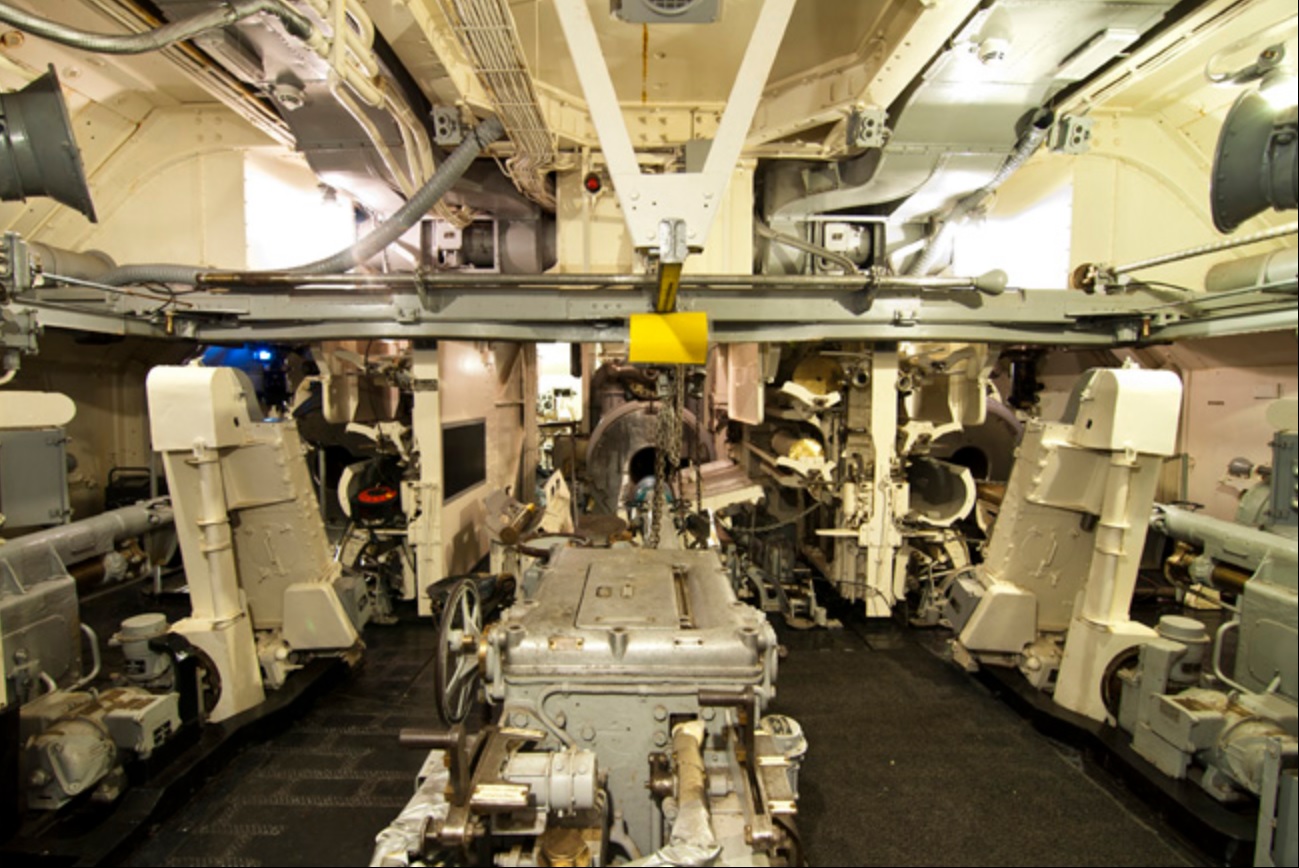


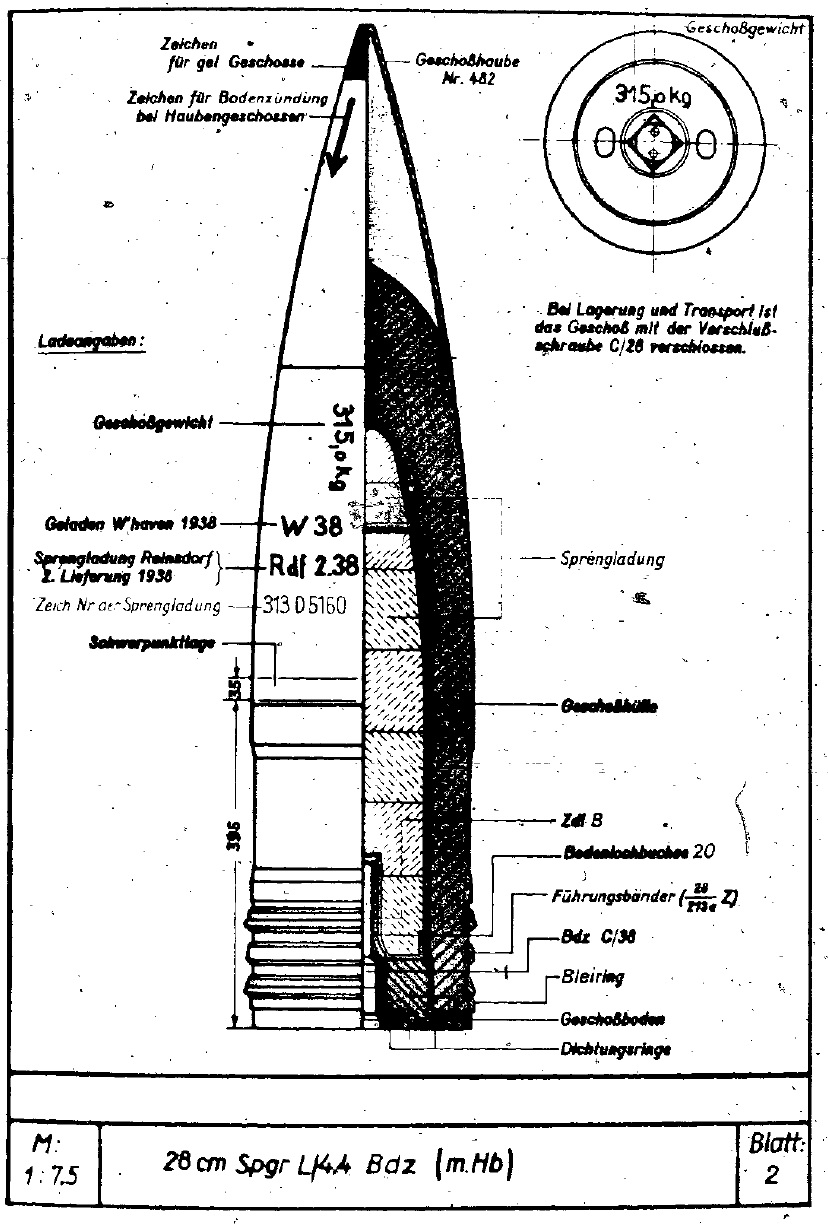
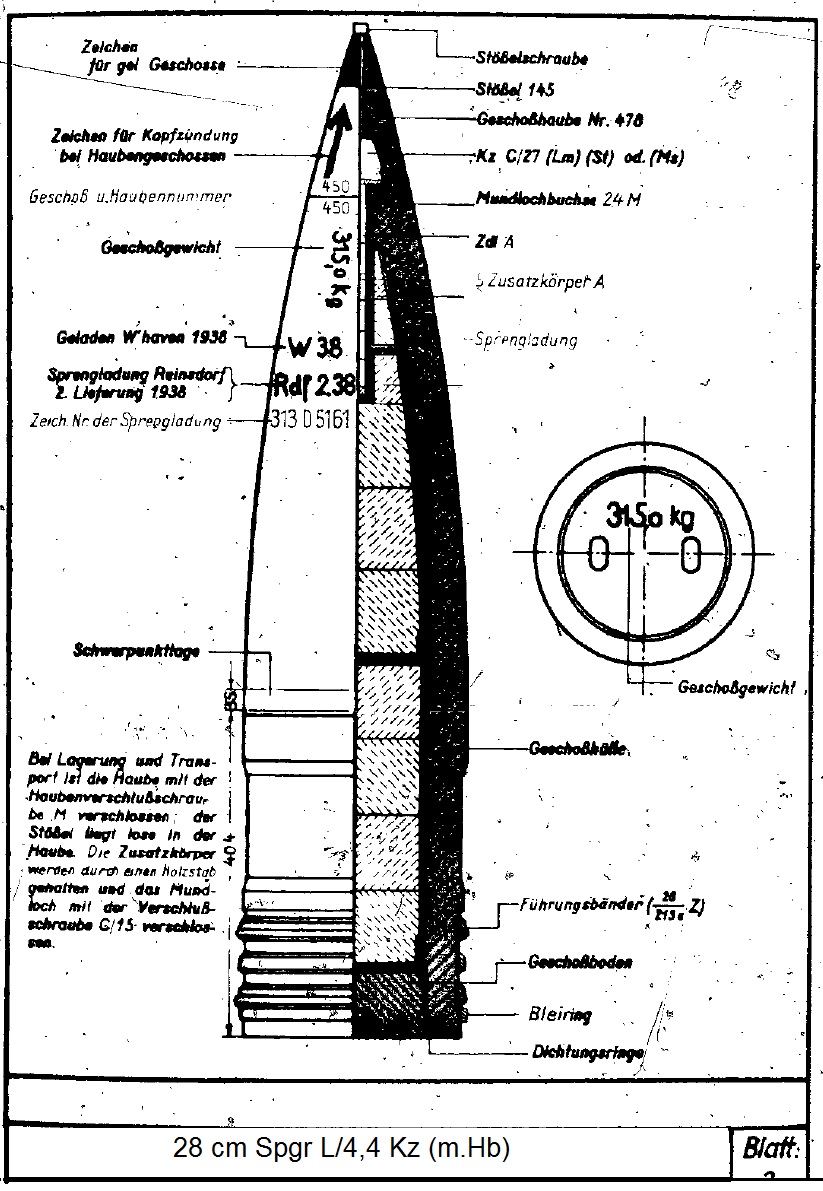
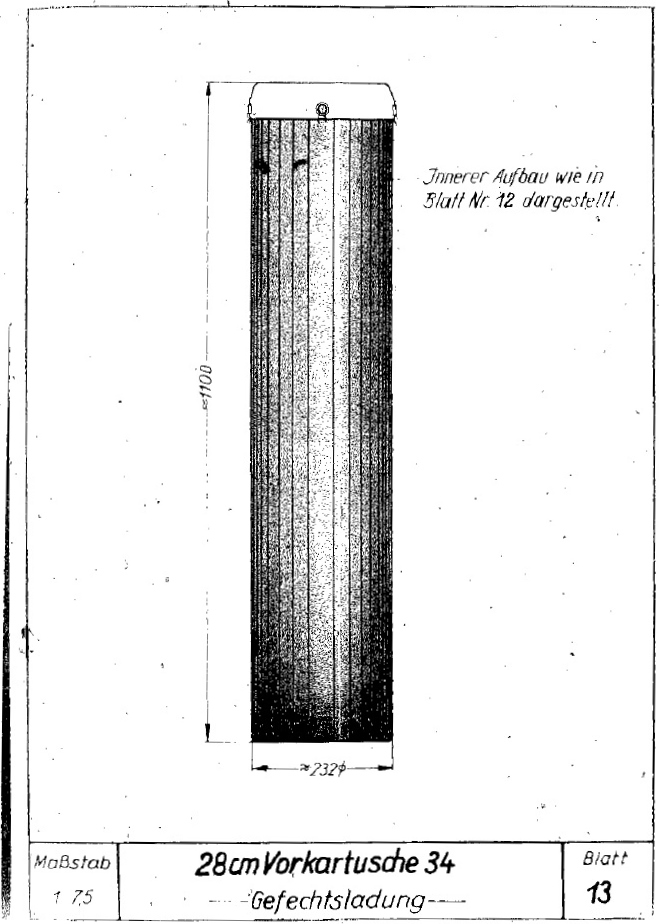
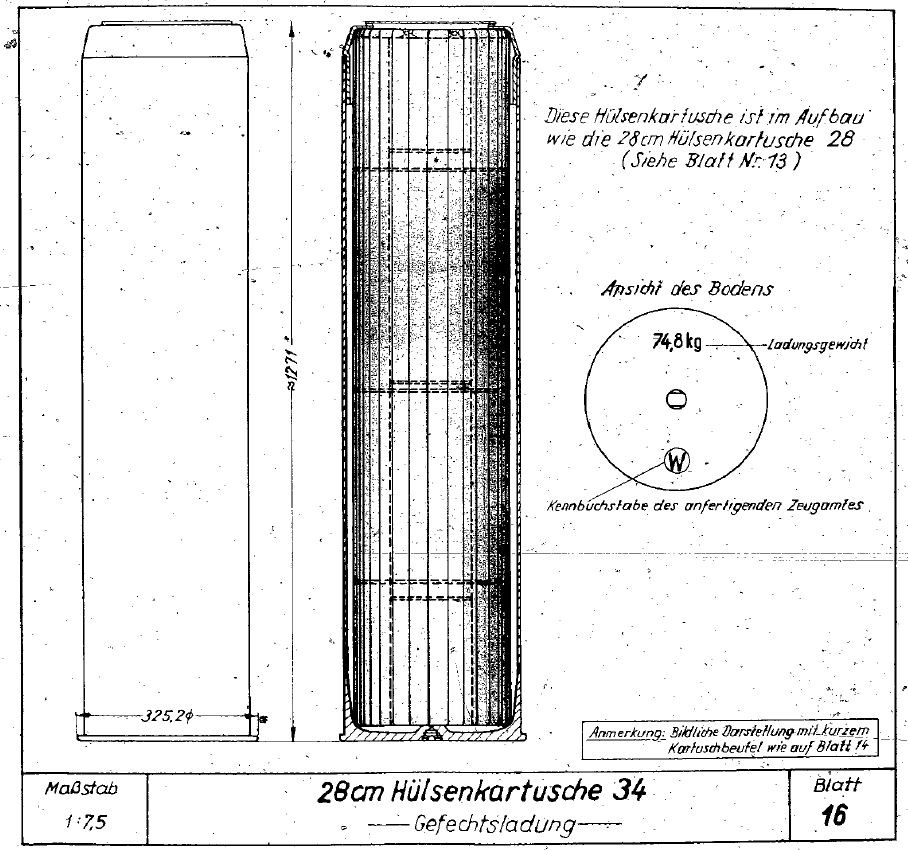
"Schlachtschiff Scharnhorst" by Heinrich Bredemeier
"Naval Weapons of World War Two" by John Campbell
"Battleship Design and Development 1905-1945" by Norman Friedman
"Battleships: Axis and Neutral Battleships in World War II" by W.H. Garzke, Jr. and R.O. Dulin, Jr.
"German Warships 1815-1945" by Erich Gröner
"The Big Gun: Battleship Main Armament 1860-1945" by Peter Hodges
"German Capital Ships of World War Two" by M.J. Whitley
---
"Merkbuch: über die Munition der 28 cm SK C/34 in Drh L C/28" M.Dv. Nr. 170,47 by Oberkommando der Kriegsmarine
"Munitionsvorschriften für die Kriegsmarine - Panzersprenggranaten mit Haube - a) Psgr (m.Hb)" M.Dv. Nr. 190,1A1 by Oberkommando der Kriegsmarine
"Munitionsvorschriften für die Kriegsmarine - Hülsenkartusche" M.Dv. Nr. 190,4A1 by Oberkommando der Kriegsmarine
"Munitionsvorschriften für die Kriegsmarine - Vorkartusche" M.Dv. Nr. 190,4A6 by Oberkommando der Kriegsmarine
---
Special help from Peter Lienau, Nathan Okun and Thorsten Wahl
Gniesenau Turret as Coastal Battery
MKB Örlandet (Austråt Fort)
13 October 2006 - Benchmark
14 March 2011 - Added information about Kreuzer P
27 April 2015 - Added notes regarding center gun delay and armor thicknesses
10 February 2016 - Changed link to point to Wayback Archive
10 June 2016 - Converted to HTML 5 format
26 August 2018 - Reorganized notes
27 March 2019 - Added data and sketches from M.Dv. Nr. 170,47, M.Dv. Nr. 190,1A1, M.Dv. Nr. 190,4A1 and M.Dv. Nr. 190,4A6
25 August 2019 - Added link to AA Projectile section
30 January 2022 - Added photograph of interior of Gneisenau turret
28 August 2024 - Added burster notes and propellant information
14 November 2024 - Formatting clean up
01 March 2025 - Minor changes
15 April 2025 - Added propellant information

